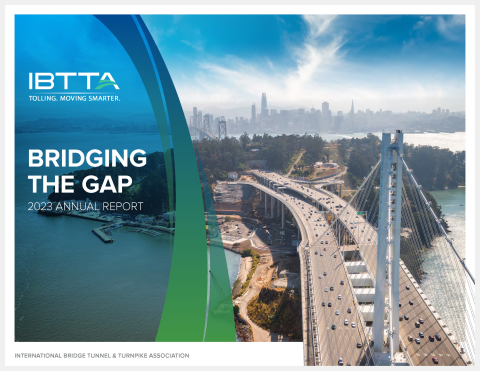- Home
- IBTTA Insights
- Truck Tolls a Winning Issue at the Polls
Stories
Truck Tolls a Winning Issue at the Polls

Guest blog by Pete Garino
The views expressed in this article are solely those of the author.
While truck tolls were not on the ballot this election day, they were a key issue in two New England governors’ races. In both states, a tolling advocate won.
In Rhode Island, incumbent Governor Gina Raimondo handily won reelection. Raimondo is a fierce supporter of truck-only tolling, a key element of her RhodeWorks program, which passed the state legislature in 2016. In neighboring Connecticut, gubernatorial candidate Ned Lamont took notice, made truck-only tolling a centerpiece of his campaign, and prevailed in a hard-fought campaign.
Rhode Island Was First
Rhode Island was the first state in the nation to approve state-wide truck-only tolling, with gantries set to be constructed on every interstate. The toll revenue is being used to fund a massive infrastructure renewal program. Rhode Island has the worst bridges in America, ranking last in the nation for its percentage of structurally deficient bridge deck area. With the $4.8 billion RhodeWorks program up and running for more than two years, Rhode Island recently announced its bridge condition improved faster than any other state in the union.
Raimondo fended off a challenge by an opponent who was supported by the Rhode Island Trucking Association and vowed to take down the truck toll gantries that were activated earlier this year. During the campaign, Raimondo indicated to the Cranston Herald that RhodeWorks was “perhaps the best policy decision of her administration thus far.”
The Rhode Island Department of Transportation saw its construction contract awards triple in the two years following RhodeWorks’ passage, and the result has been evident in the state’s labor market: Since Raimondo’s first full month in office, construction jobs have increased nearly 20%, more than four times faster than other sectors.
Lamont was just as assertive about tolling in the Connecticut gubernatorial race, asserting that “I’m going to make it a priority from day one.” More recently he has come out supporting truck-only tolling as a starting point. For several years, the state has been debating reinstituting tolling to tackle its infrastructure issues. According to federal statistics, Connecticut has the second-worst bridge condition in the nation. Only Rhode Island has a higher percentage of structurally deficient bridges.
During the campaign, Lamont said he expected truck-only tolling would collect $250 million in annual revenue, significantly more than the $45 million Rhode Island expects to see each year when its system is fully deployed. Connecticut has nearly five times more miles of interstate capacity than Rhode Island, and its interstates see a higher percentage of tractor trailer traffic—its urban interstates receive more than double the truck traffic. Taking those two factors together, federal statistics indicate that Connecticut has more than nine times as much tractor trailer traffic as Rhode Island. Given Lamont’s $250-million estimate for truck tolling, we can expect his state will assess lower tolls than Rhode Island, where the border-to-border charge is $20.
Both Connecticut and Rhode lsland leaders understand the power and effectiveness of tolling and its user pays principle and they are not alone. Many states are coming to the conclusion that the gas tax is no longer sustainable in the long term. They are looking to innovative means such as tolling to address their crumbling infrastructure. In 2020, Indiana governor Eric Holcomb will be up for reelection. Governor Holcomb recently pushed through a plan to raise tolls on trucks by 35% in order to secure $1 billion in infrastructure funding. Indiana’s Republican governor cited the same statistics that Democrat Governor Gina Raimondo used in Rhode Island – namely that a fully loaded tractor trailer has as much impact on highway infrastructure as nearly 10,000 cars. While this statistic has been used more frequently of late, its origins date back nearly 40 years to a 1979 U.S. GAO report to Congress. That report stated that a fully loaded tractor trailer has as much impact on the roads as 9,600 cars.
The 2018 elections are nearly behind us and state and federal policy makers continue their search for the right balance of funding options to address major infrastructure needs. Perhaps yet, we may see democrats and republicans at the state and federal levels coming together to invest in America’s future.
Pete Garino is President of Advanced Management Consulting LLC and is the former Chief Operating Officer of the Rhode Island Department of Transportation.
Joining IBTTA connects you to a global community of transportation professionals, offering unmatched opportunities for networking, knowledge-sharing, and collaborative innovation in the tolling and transportation sector.
Follow IBTTA on social media for real-time updates on transportation trends and collaborative opportunities.





